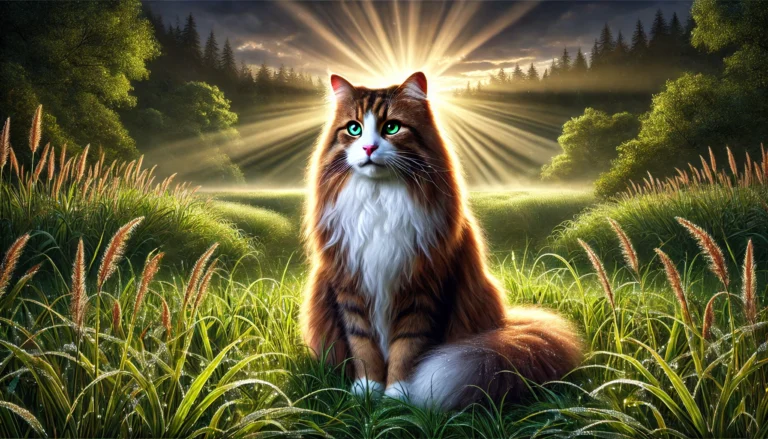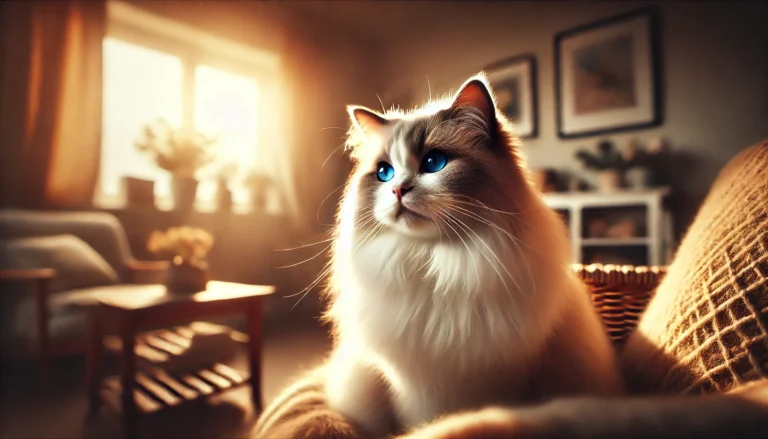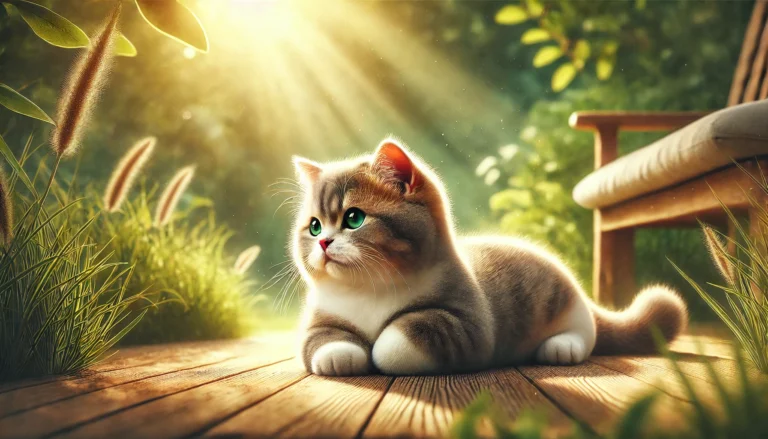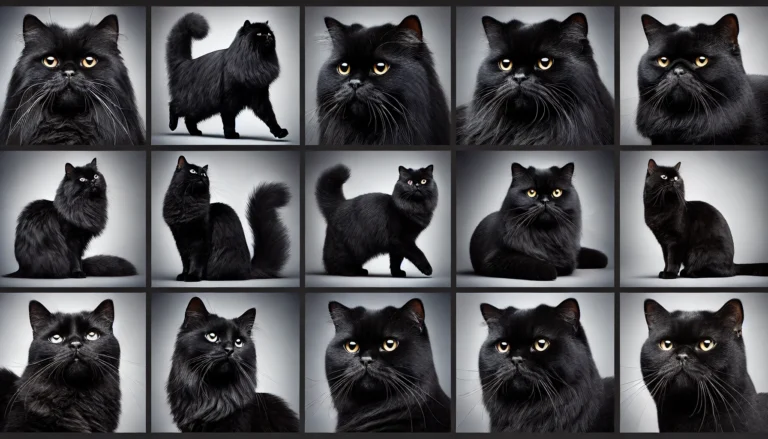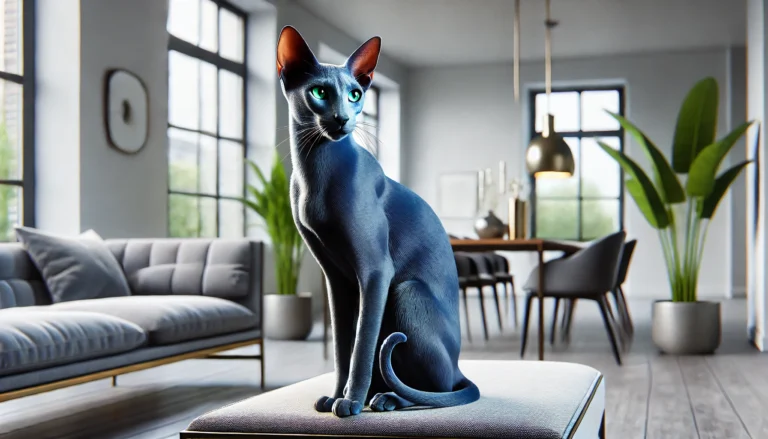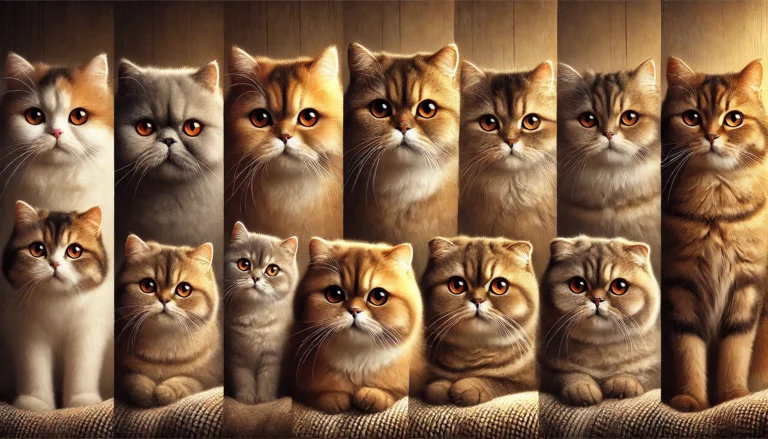15 long-haired cat breeds
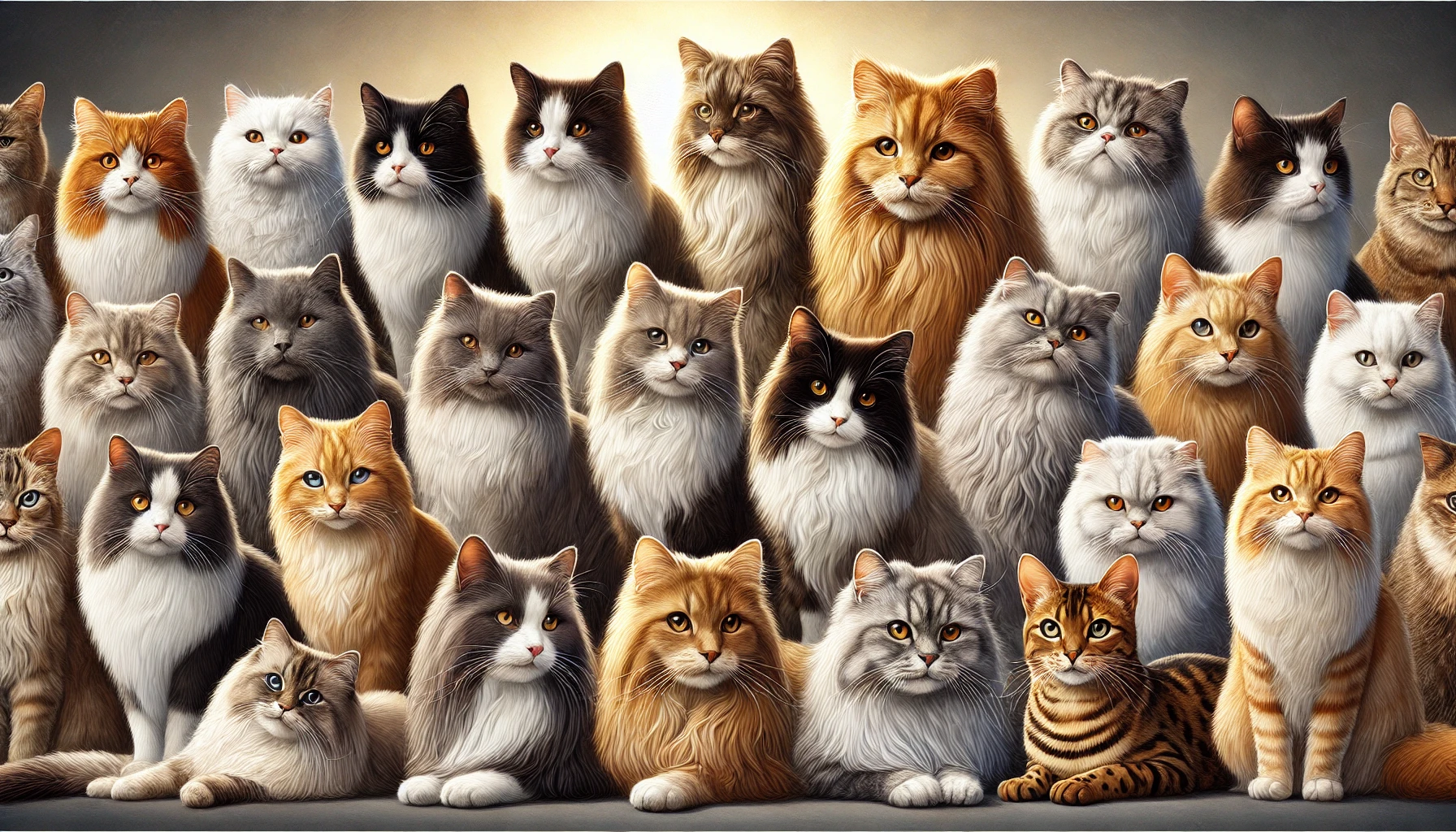
Long-haired cats, known for their silky and sometimes voluminous fur, are one of the most beloved types of domestic cats. These cats, which include some of the most majestic and affectionate breeds, require a bit more care compared to short-haired types. Whether you’re considering adopting a long-haired cat or you already own one, understanding the unique traits, grooming needs, and health considerations can help you care for them better. This guide explores 15 long-haired cat breeds, giving you insights into their personality, grooming habits, and how they thrive in a domestic setting.
What Defines a Long-Haired Cat?
A long-haired cat is any breed with fur that extends longer than what is typically found in short-haired cats. While grooming these fluffy cats can be a bit more demanding, their soft coats and majestic appearance make them worth the extra care.
Key Features of Long-Haired Cats:
- Length of Fur: Long-haired cats typically have fur longer than 3 inches.
- Undercoat: Most long-haired cats have an undercoat that helps protect them in colder weather, but it also requires regular maintenance.
- Types of Fur Coats: Fluffy, wavy, or silky, the type of coat varies across different breeds, with some cats having ruffs or tufts of fur around their necks and ears.
15 Popular Long-Haired Cat Breeds
1. Persian
- Appearance: Persian cats are famous for their full, luxurious coats and expressive faces. They are known for their fluffy coats, which can range in colors from white, black, grey, and even multicolored.
- Temperament: These gentle, affectionate cats enjoy quiet environments and often form strong bonds with their owners.
- Grooming: Regular brushing is required to prevent tangles in their dense coats. Their hair grows in a way that can form mats if not regularly maintained.
- Health Considerations: Persians may be prone to respiratory issues and eye problems due to their short, flat faces.
- Common Variations: Grey long-haired cats and multicolored cats can be found in Persian breeds.
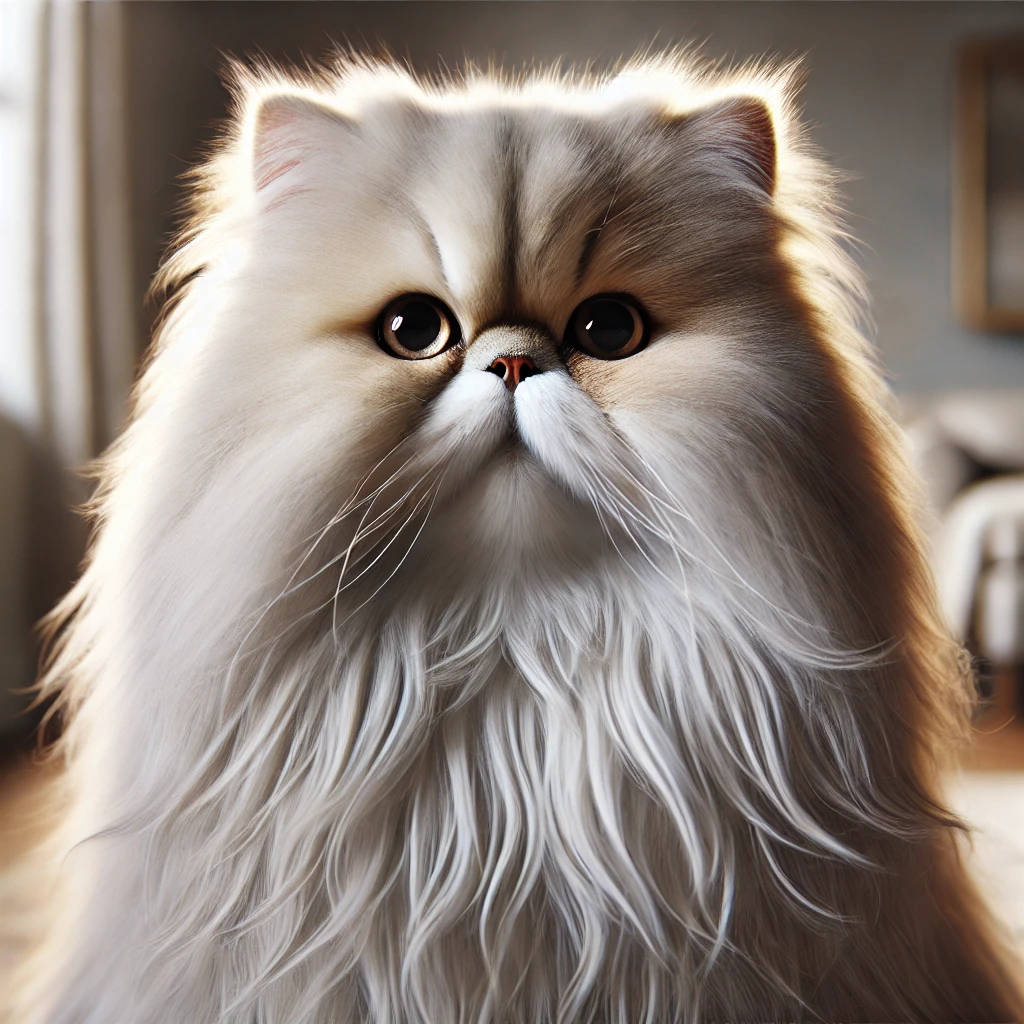
2. Maine Coon
- Appearance: Maine Coons are large, fluffy cats with long coats and tufted ears. Their tails are often described as “bushy” and provide a beautiful addition to their overall look.
- Temperament: They are friendly and highly social. Maine Coons are considered one of the best long-haired cat breeds for families, as they are great with children and other pets.
- Grooming: Despite their thick, long fur, Maine Coons’ coats are relatively easy to manage, but brushing is still important to prevent mats.
- Health Considerations: Maine Coons may be at risk for hypertrophic cardiomyopathy (heart disease) and hip dysplasia.
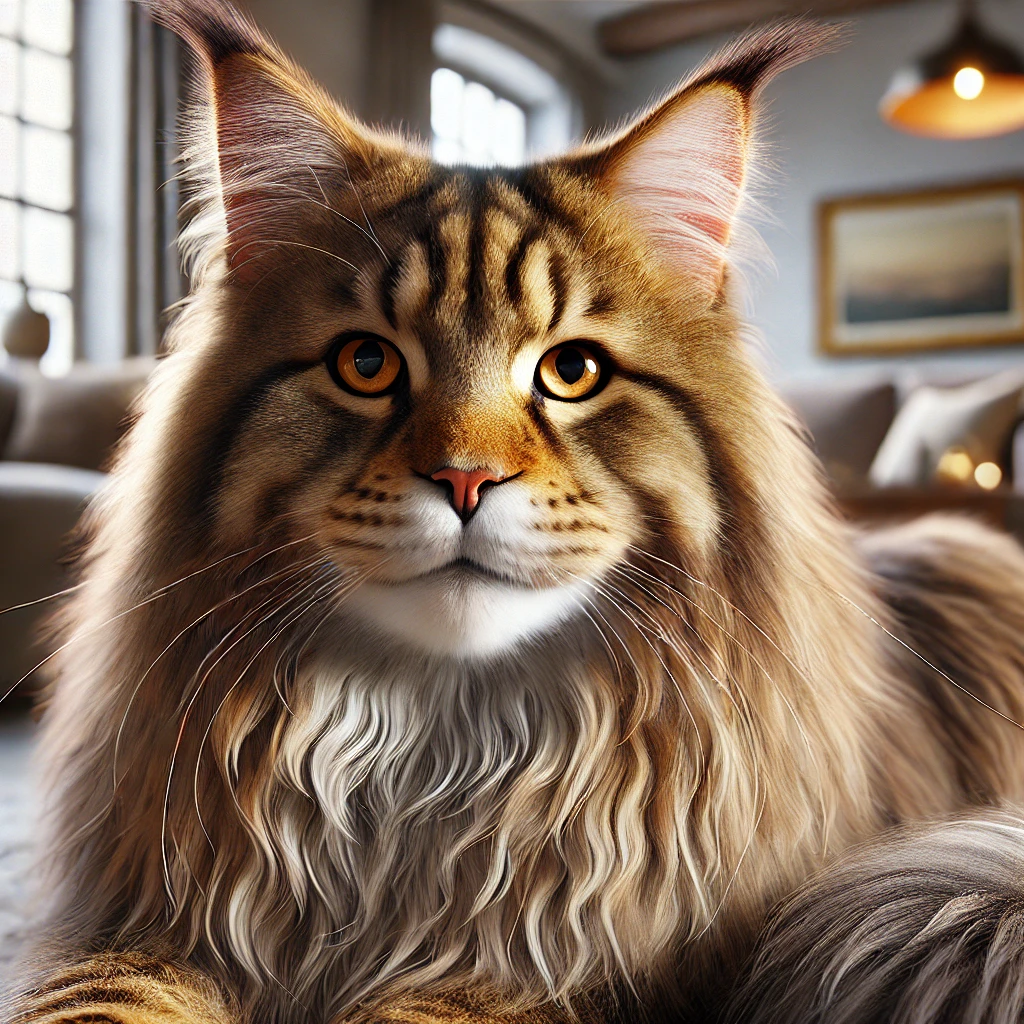
3. Ragdoll
- Appearance: Ragdolls are large cats with soft, semi-long hair. Their eyes are usually blue, and they are known for their color-point patterns.
- Temperament: True to their name, Ragdolls are known for their docile and relaxed nature. They are one of the most affectionate long-haired cats and enjoy being held.
- Grooming: Their semi-long fur requires less maintenance than other long-haired cats, but occasional brushing is needed to keep their fur from matting.
- Health Considerations: Ragdolls are generally healthy but may be prone to certain heart conditions like hypertrophic cardiomyopathy.
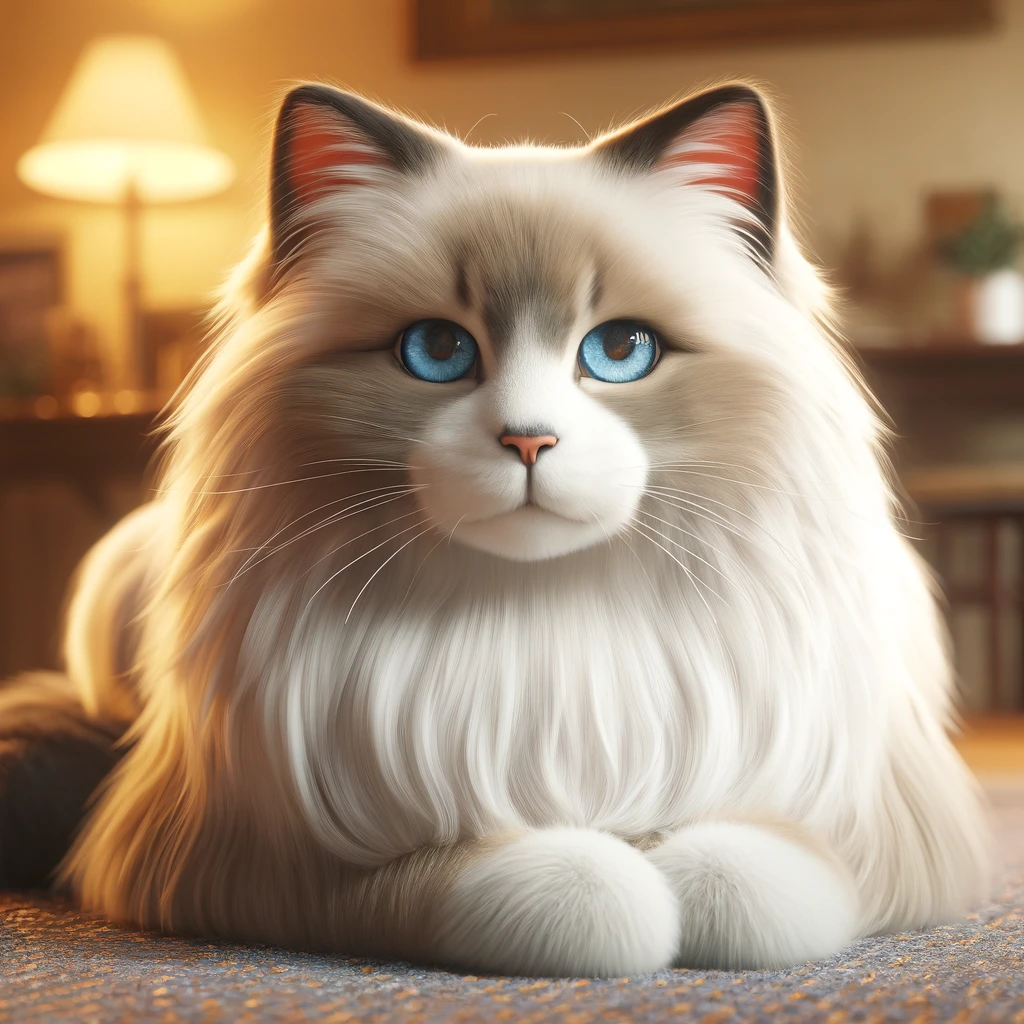
4. Birman
- Appearance: Birman cats have a silky, medium-length coat that is lighter in color on the body with darker points on the ears, face, paws, and tail.
- Temperament: These cats are affectionate, playful, and gentle. They love being around their human family members and get along well with other pets.
- Grooming: Birman cats’ coats are relatively easy to manage with a good brushing routine.
- Health Considerations: Birman cats are generally healthy but can develop kidney issues in later years.
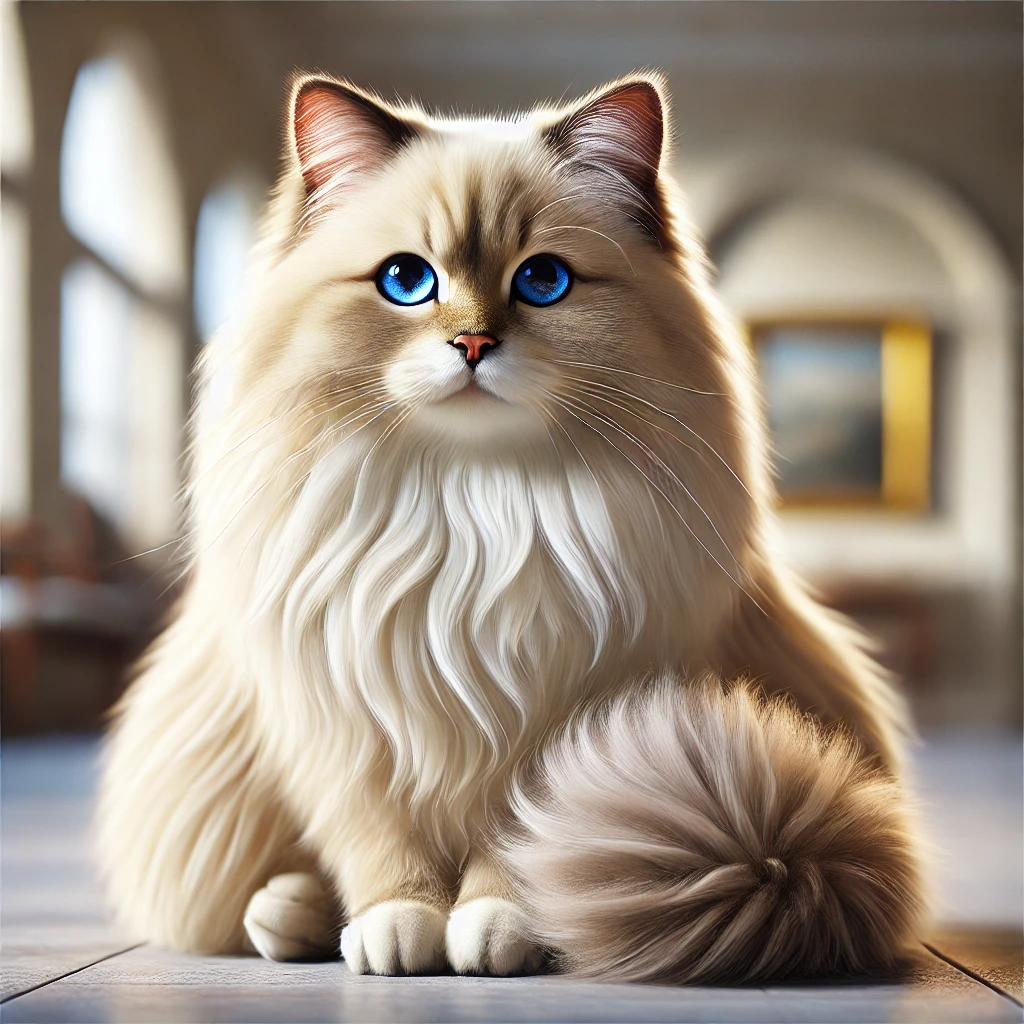
5. Turkish Angora
- Appearance: The Turkish Angora is a striking breed with a sleek, long coat. They have almond-shaped eyes and are most commonly seen in white, but they come in various colors.
- Temperament: These cats are highly active and intelligent. They require a lot of attention and enjoy interacting with their owners.
- Grooming: Despite their long coat, Turkish Angoras are relatively low-maintenance in terms of grooming, though regular brushing helps.
- Health Considerations: They can be prone to heart and kidney issues but are generally a healthy breed.
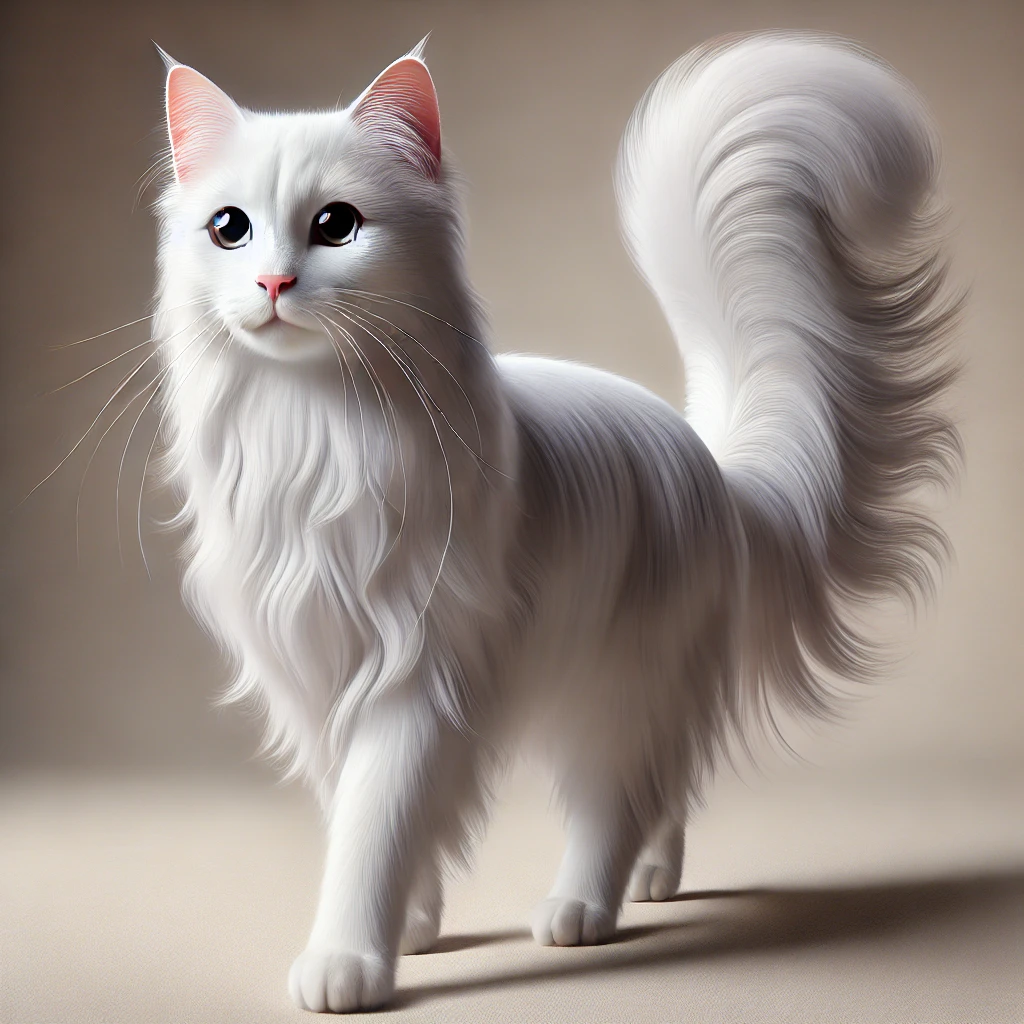
6. Scottish Fold
- Appearance: Scottish Folds are known for their unique folded ears and sweet, round faces. Their fur is medium to long, and they come in various colors and patterns.
- Temperament: Scottish Folds are calm and affectionate cats that prefer a peaceful environment. They love to be around their families.
- Grooming: Their medium-length fur requires regular brushing to prevent tangles and mats.
- Health Considerations: Their ear fold gene can lead to joint problems, which may cause arthritis in older age.
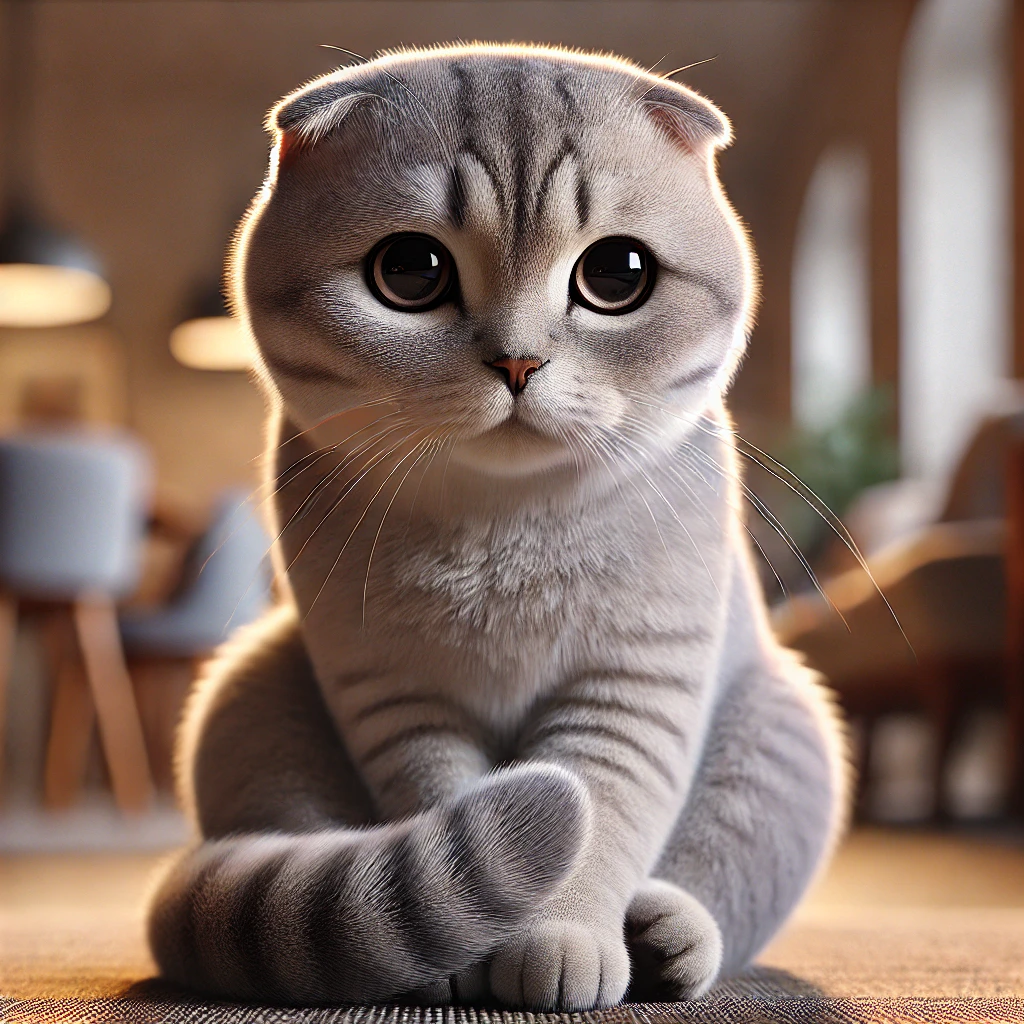
7. Exotic Shorthair
- Appearance: The Exotic Shorthair is essentially a Persian with a shorter, plush coat. Despite its shorter fur, the breed’s thick undercoat still makes it a long-haired cat in terms of grooming.
- Temperament: These cats are calm, affectionate, and playful, making them great companions for families.
- Grooming: Regular brushing is needed to keep their coats clean, especially to prevent tangles.
- Health Considerations: Exotic Shorthairs, like Persians, can be prone to respiratory issues.
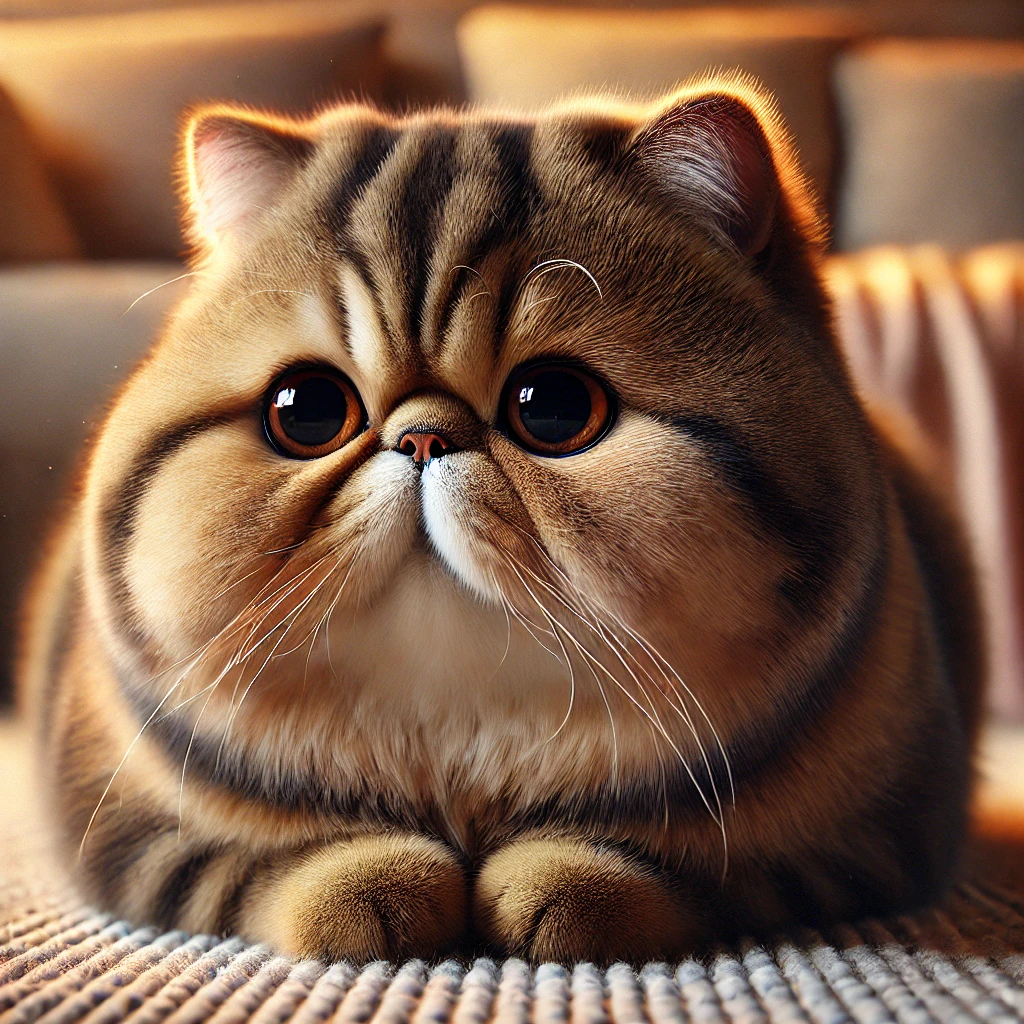
8. Himalayan
- Appearance: The Himalayan is a beautiful long-haired breed that has a color-pointed coat similar to the Siamese but with Persian features.
- Temperament: They are calm and affectionate, with a soft voice. Himalayans enjoy lounging and forming bonds with their owners.
- Grooming: Regular grooming is required, as their long fur can quickly become tangled.
- Health Considerations: Like Persians, Himalayans can have respiratory problems due to their short, flat faces.

9. Siberian
- Appearance: The Siberian cat has a thick, water-resistant coat that comes in a variety of colors and patterns. Their fur provides insulation and protection in colder climates.
- Temperament: Siberians are energetic and playful. They enjoy climbing and exploring, making them excellent companions for active families.
- Grooming: Regular brushing is essential, especially during shedding seasons.
- Health Considerations: Generally healthy, Siberians can sometimes develop heart problems.
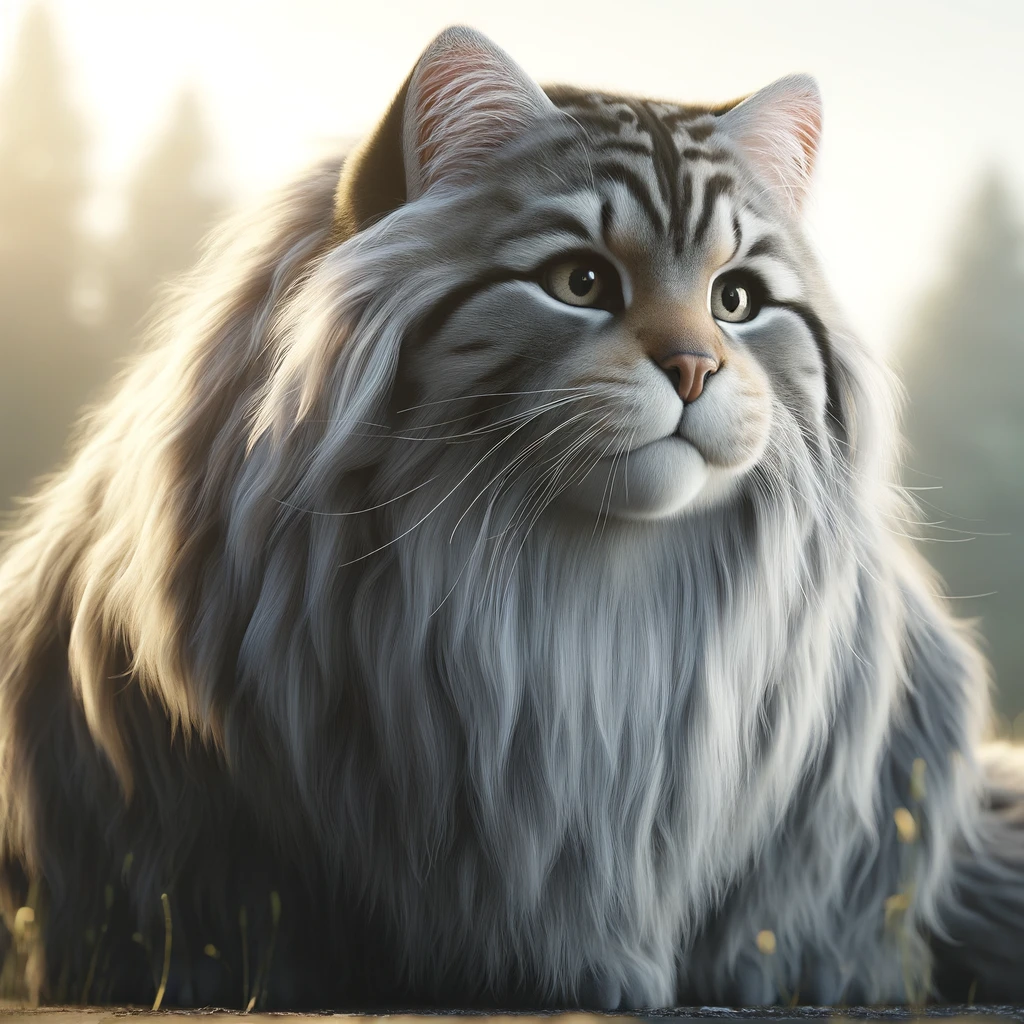
10. Somali
- Appearance: Somalis have a medium-length, ticked coat that is softer and lighter around the neck and chest, resembling a lion’s mane.
- Temperament: Playful, energetic, and intelligent, Somalis love interactive play and socializing with their family members.
- Grooming: Their coat is easy to maintain, but they still need occasional grooming.
- Health Considerations: Somalis are relatively healthy, but they may be susceptible to kidney issues as they age.
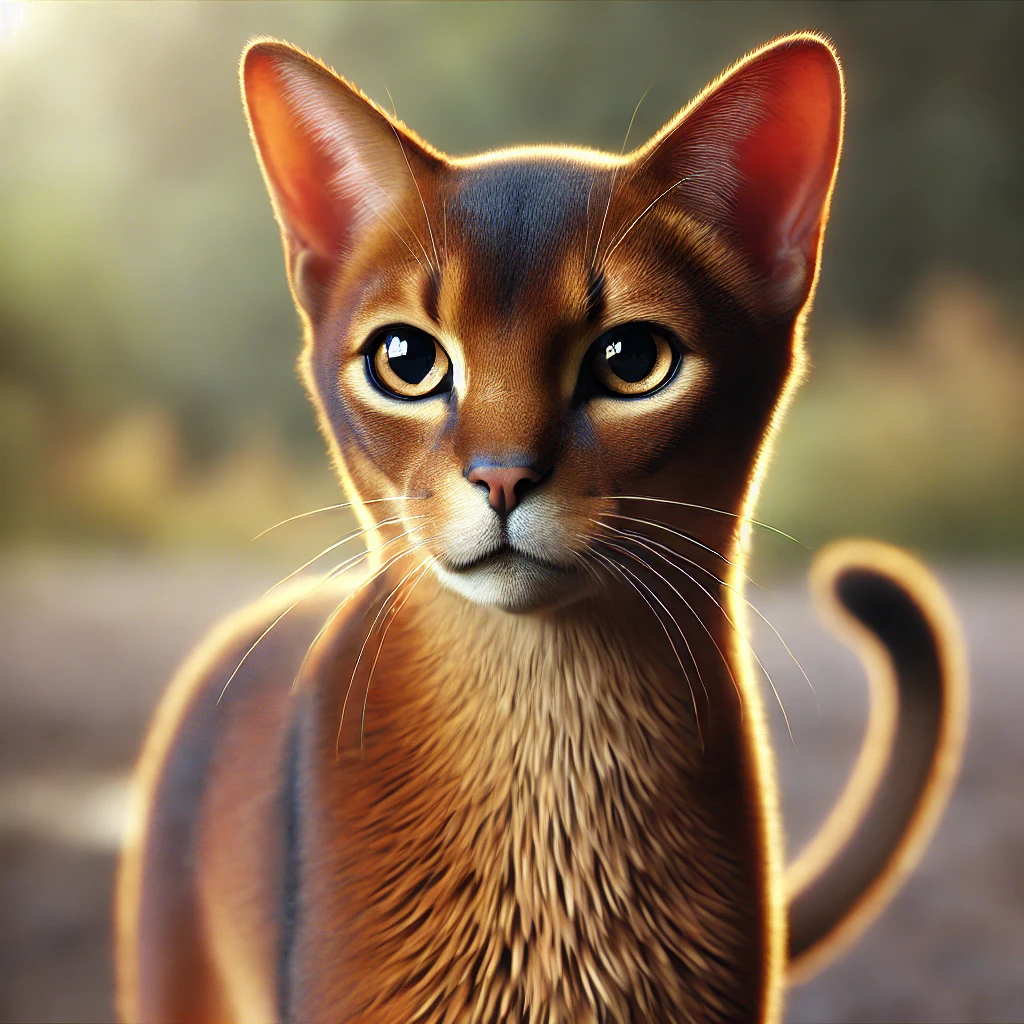
11. LaPerm
- Appearance: LaPerms are distinguished by their curly fur, which is soft and luxurious. They come in a variety of colors and patterns.
- Temperament: These cats are incredibly social, intelligent, and affectionate. They enjoy being involved in all family activities.
- Grooming: Their curly coat requires minimal grooming, but brushing helps keep the curls neat.
- Health Considerations: LaPerms are generally healthy but may occasionally develop genetic issues related to their coat.
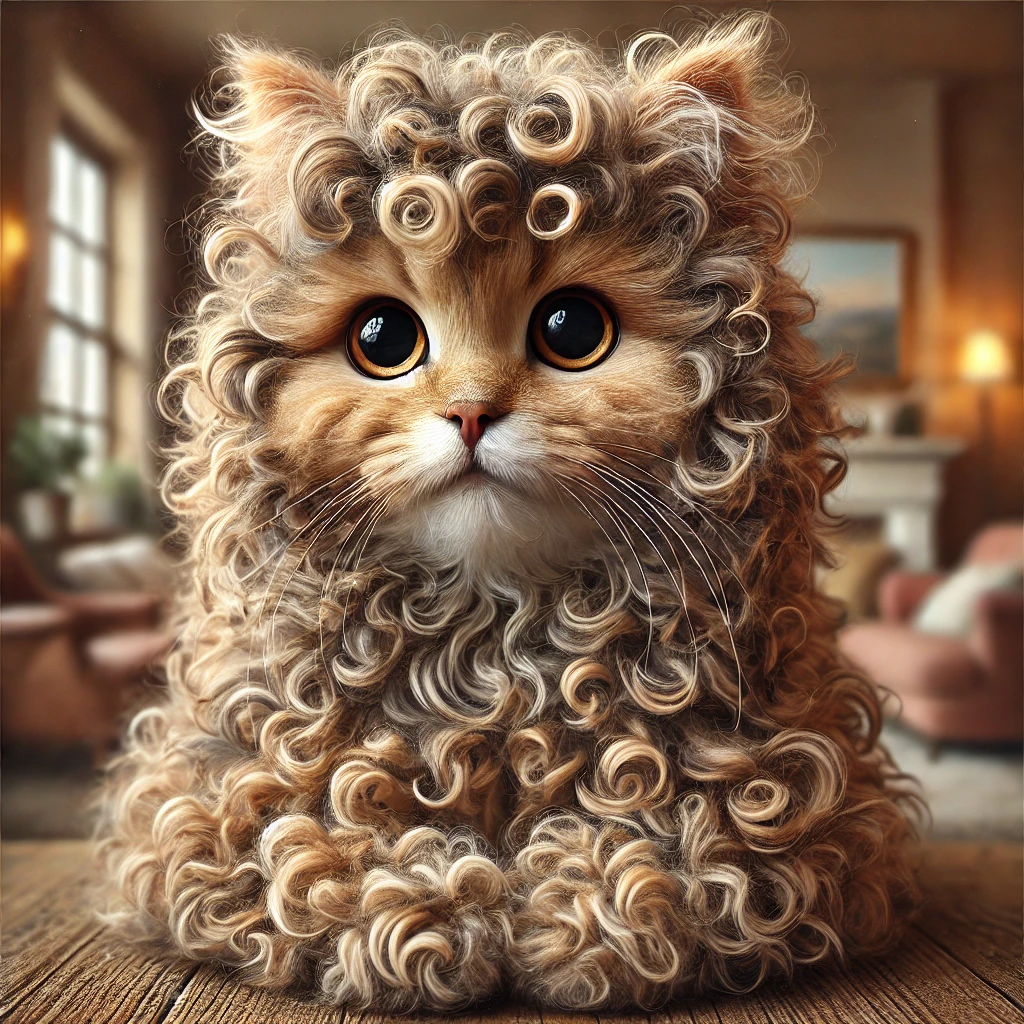
12. Balinese
- Appearance: The Balinese is a long-haired version of the Siamese. They have a silky coat and striking blue eyes.
- Temperament: Social and affectionate, Balinese cats enjoy human interaction and are vocal, often communicating their needs to their owners.
- Grooming: Their long fur is relatively easy to manage with occasional brushing.
- Health Considerations: Balinese cats may have health issues similar to the Siamese, including kidney and heart conditions.
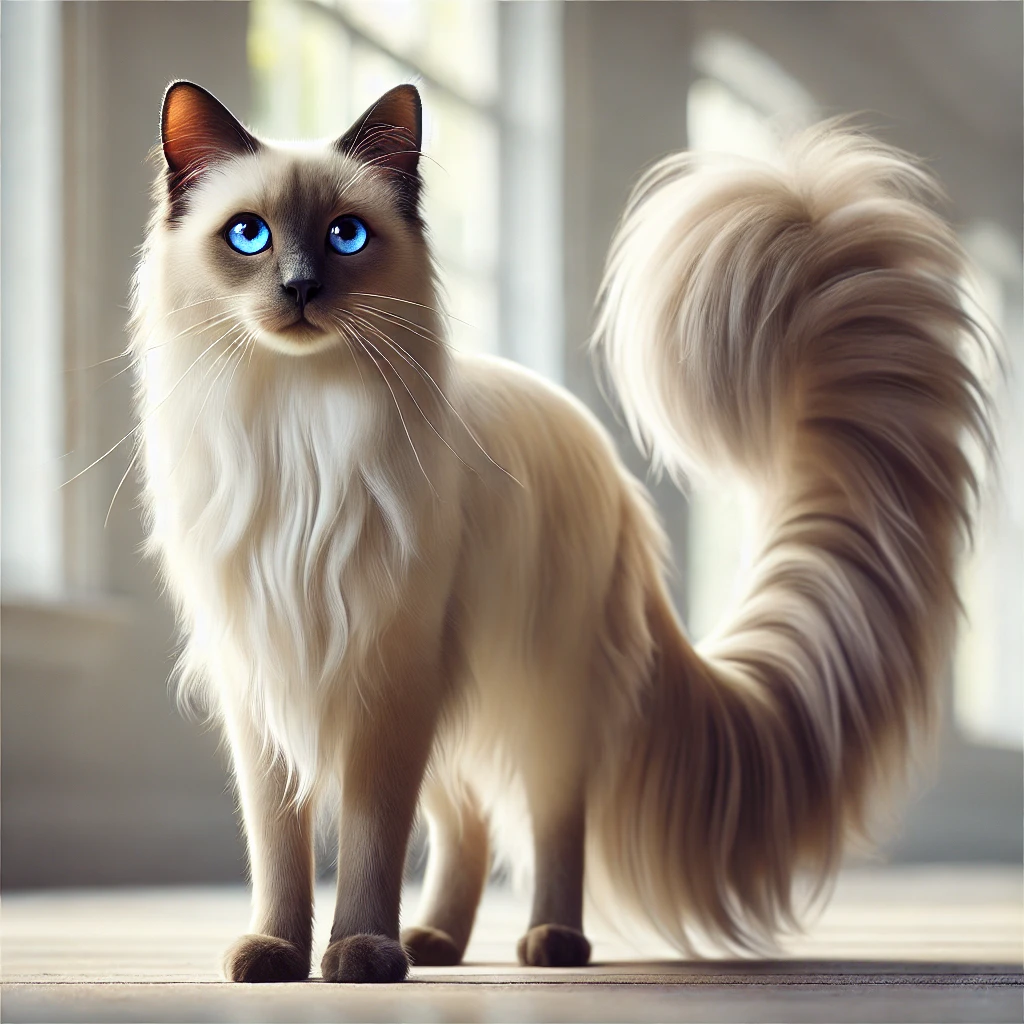
13. Chinchilla
- Appearance: Chinchillas have a shimmering, silvery coat, often described as one of the most luxurious among long-haired breeds.
- Temperament: Calm and affectionate, they make great lap cats, preferring to lounge around with their family members.
- Grooming: Their long, fine fur requires regular grooming to prevent tangles.
- Health Considerations: Like other long-haired cats, Chinchillas may be prone to respiratory problems.
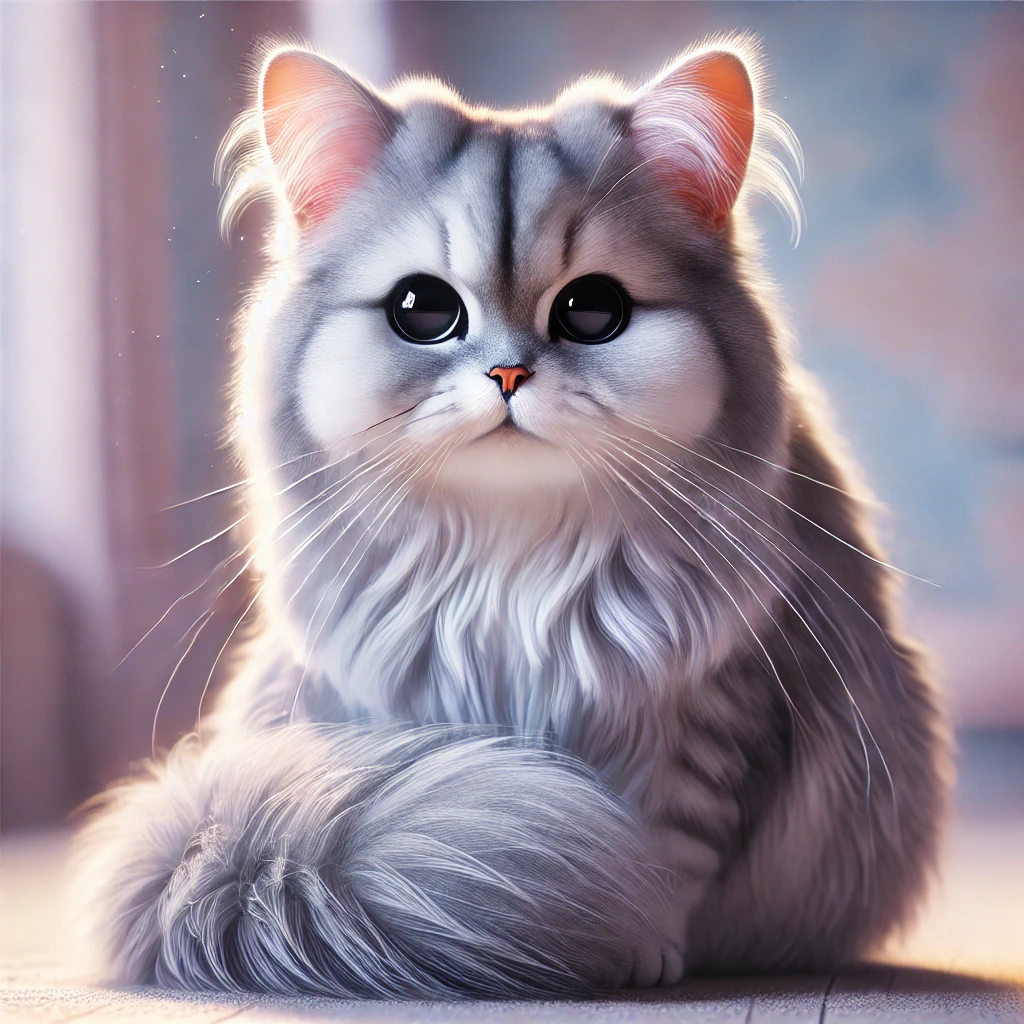
14. Bengal (Long-Haired)
- Appearance: Bengal cats are known for their striking coat patterns, which resemble that of a wild leopard. The long-haired version of the Bengal has a slightly softer coat.
- Temperament: Bengal cats are very active and intelligent. They require lots of mental stimulation and physical activity.
- Grooming: Their coat is relatively easy to manage, but they still require occasional grooming.
- Health Concerns: Bengal cats can be prone to hip dysplasia and heart conditions.
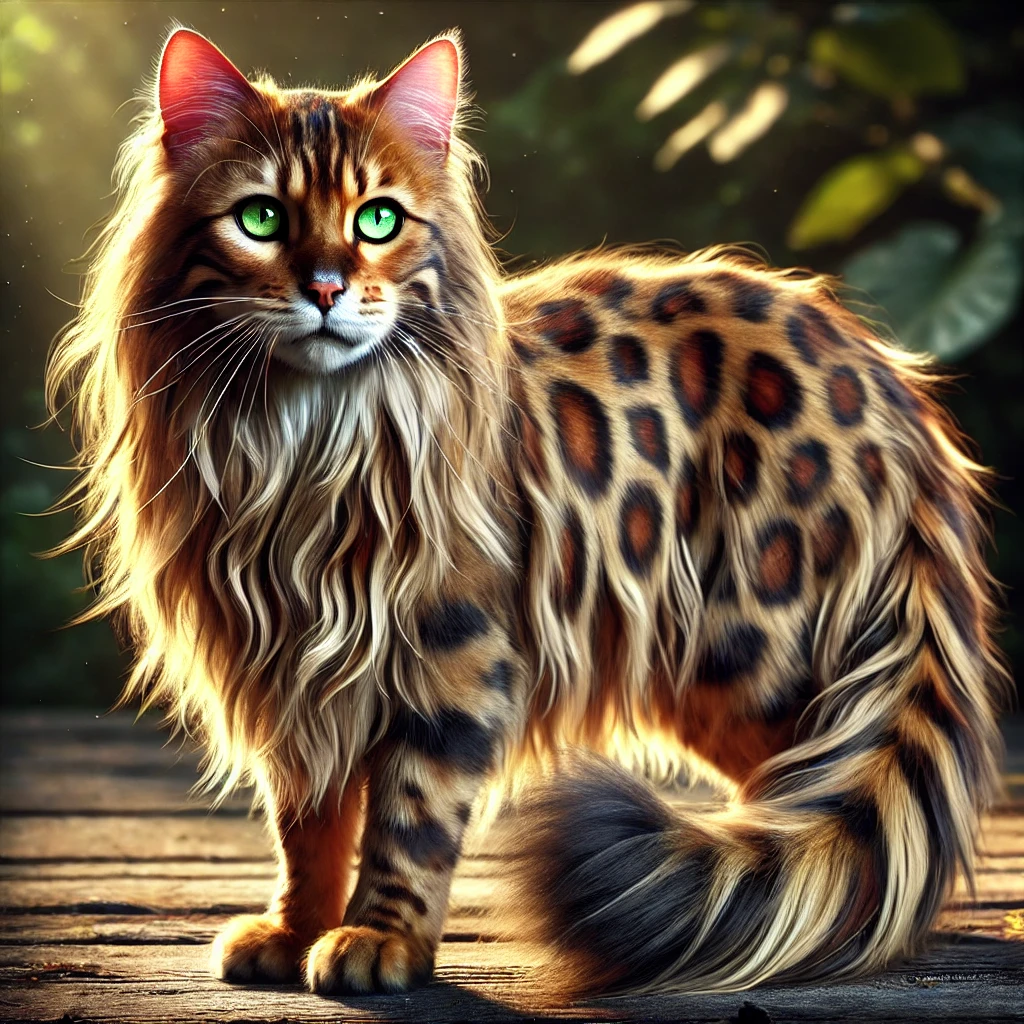
15. American Curl
- Appearance: American Curls are distinguished by their unique curled ears. They have soft, long coats that require care to prevent tangles.
- Temperament: American Curls are playful, curious, and highly affectionate. They bond closely with their owners.
- Grooming: Their coats are medium to long and require regular brushing.
- Health Concerns: They are generally healthy but may be prone to arthritis as they age.
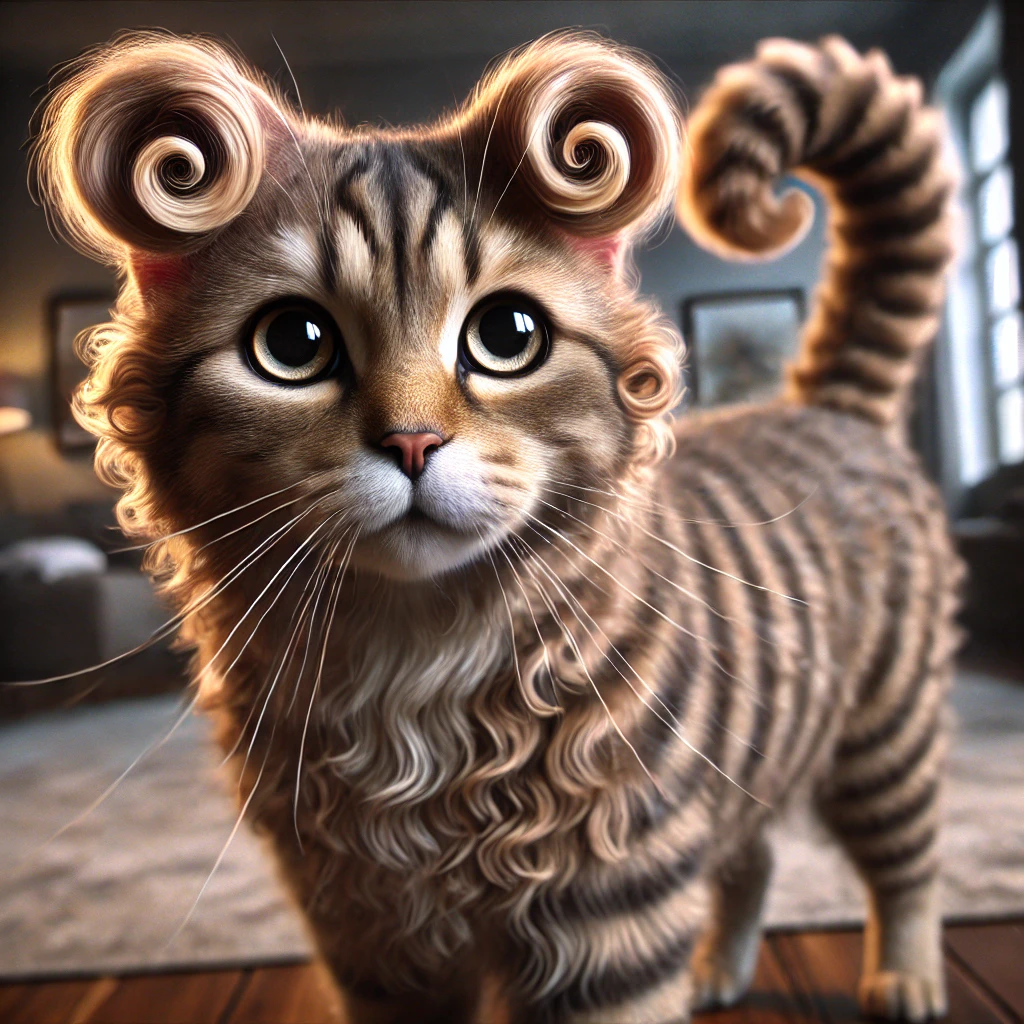
Common Characteristics of Long-Haired Cats
Long-haired cats come in a variety of shapes, sizes, and coat types. While each breed has its distinct personality and characteristics, there are several traits that most long-haired cats share.
Coat Types and Characteristics
Long-haired cats can have a variety of coat textures, from soft and silky to coarse and wiry. Some breeds, like the Persian, have dense, thick fur, while others, like the Turkish Angora, have a more streamlined and silky coat. There are also cats with wavy hair, like the LaPerm, which have uniquely curly fur. Some long-haired cats, such as the Maine Coon, also have a distinctive ruff and tufts of fur around their necks and ears, contributing to their wild appearance.
- Fluffy Tail: One of the standout features of many long-haired cats is their fluffy tail. This feature, often seen in breeds like the Maine Coon and Norwegian Forest Cat, adds to their majestic look.
- Hair on Ears: Some long-haired breeds, like the American Curl and Maine Coon, have cat with long hair on ears, which is a unique feature that distinguishes them from other breeds.
Fluff and Grooming Challenges
With long hair comes a unique set of grooming challenges. These cats often have cats with a lot of fur, which can become tangled or matted if not properly maintained. Unlike medium-haired cats, long-haired cats need more frequent grooming to maintain their coat in top condition. The thicker the coat, the more frequent grooming becomes essential, especially during shedding season.
Health Considerations for Long-Haired Cats
Long-haired cats can be prone to certain health issues, many of which are related to their coats and grooming habits. It’s important to understand these concerns to keep your furry friend healthy and happy.
Common Health Concerns
- Hairballs: One of the most common issues with long-haired cats is hairballs. These occur when the cat swallows loose hair while grooming itself. Regular brushing can significantly reduce the likelihood of hairballs forming.
- Respiratory Issues: Some long-haired breeds, particularly those with flat faces like the Persian and Himalayan, may suffer from respiratory problems due to their short, compressed noses.
- Arthritis: Long-haired cats like the American Curl may develop arthritis as they age, particularly due to the weight of their dense coats.
- Heart Conditions: Maine Coons and Ragdolls are two examples of long-haired cats that may be susceptible to heart conditions like hypertrophic cardiomyopathy.
Regular Check-ups
Routine veterinary visits are important to monitor health conditions, particularly for breeds with known genetic predispositions. It’s advisable to keep up with annual check-ups and be vigilant about any changes in behavior or coat quality.
Do you know?
Vomiting in cats, mostly, needs special attention. Feline buddy owners should know common causes, types of vomit, and what to do, for timely remedial measures.
Grooming Tips for Long-Haired Cats
Proper grooming is essential to keeping a long-haired cat healthy. Cats with long coats, such as the Persian or Ragdoll, require regular maintenance to ensure their fur remains free of tangles and mats. Here are some tips for grooming long-haired cats effectively:
Brushing and Detangling
- Frequency: Aim to brush your long-haired cat 2-3 times a week. For cats with extremely thick coats, like the Maine Coon or Norwegian Forest Cat, daily grooming may be necessary, especially during shedding season.
- Types of Brushes: Use a pin brush, slicker brush, or comb to manage tangles. Be gentle, as long-haired cats can have sensitive skin. A de-matting comb can help with stubborn knots.
- Bathing: Long-haired cats, especially those with oily or silky fur, may benefit from an occasional bath. A gentle cat shampoo will help keep their coat clean and shiny.
Dealing with Hairballs
Hairballs are a common issue for long-haired cats. Brushing your cat frequently can prevent hairballs by removing loose fur before it’s swallowed. Additionally, feeding a special hairball formula cat food can help reduce their occurrence.
Ear Care
Some long-haired cats, like the American Curl, have extra fur in and around their ears, which can trap dirt and wax. Regular ear cleaning is essential to prevent ear infections. Always use a cat-safe ear cleaner and cotton balls or gauze.
Choosing the Right Long-Haired Cat Breed for Your Home
When considering adopting a long-haired cat, it’s essential to assess the breed’s specific needs and match them to your lifestyle. Here’s how to determine which long-haired cat might be the best fit:
Activity Level
Some long-haired breeds, like the Maine Coon and Turkish Angora, are highly energetic and require more interactive play and mental stimulation. Others, like the Persian or Ragdoll, are more laid-back and enjoy lounging.
Space Considerations
Larger breeds like the Maine Coon or Norwegian Forest Cat require more space to move around comfortably. These cats are better suited to larger homes or apartments with plenty of room for them to explore. On the other hand, smaller long-haired breeds, such as the Exotic Shorthair or American Curl, can adapt more easily to smaller spaces.
Grooming Commitment
Long-haired cats require a significant time investment in grooming. Breeds like the Persian and Himalayan need frequent brushing, while other breeds like the Siberian or Turkish Angora are a bit more low-maintenance. Be prepared to dedicate time each week to brushing your cat and keeping its coat in top shape.
Tips
Which fruits can cats eat? It is one of the most underrated question that needs proper discussion before giving any fruit to feline buddy, before it gets too late.
Famous Long-Haired Cats in Popular Culture
Long-haired cats have made appearances in films, TV shows, and online media, often representing elegance, grace, and beauty. Some famous long-haired cats include:
- Garfield: While Garfield is typically portrayed as a fat orange tabby cat, the iconic lazy cat with long fur is a symbol of many long-haired breeds.
- The Aristocats: The animated film features Marie, a fluffy white cat, as one of the main characters, demonstrating the grace and charm of long-haired cats.
- Internet Sensations: Several long-haired cats, including those with fluffy tails and striking coats, have become internet sensations, showcasing their luxurious fur and playful personalities.
Long-Haired Cat Breeds Comparison Table
Here is a comparative overview of popular long-haired cat breeds, summarizing their appearance, temperament, and grooming needs:
| Breed | Appearance | Temperament | Grooming Needs | Health Considerations |
|---|---|---|---|---|
| Maine Coon | Large, tufted ears, bushy tail | Friendly, social, playful | High (daily brushing) | Heart disease, hip dysplasia |
| Persian | Round face, dense fur, flat nose | Calm, affectionate | Very High (daily grooming) | Respiratory issues, eye problems |
| Ragdoll | Large, color-point, blue eyes | Relaxed, affectionate | Moderate (weekly grooming) | Heart conditions |
| Siberian | Long, water-resistant coat | Energetic, playful | High (weekly grooming) | Heart problems, kidney issues |
| Norwegian Forest Cat | Long, thick coat, tufted ears | Independent, friendly | High (weekly grooming) | Heart disease |
| Turkish Angora | Sleek, silky coat, almond-shaped eyes | Intelligent, active | Moderate (weekly grooming) | Rarely any health issues |
| Birman | Color-pointed, silky coat | Affectionate, calm | Moderate (weekly grooming) | Kidney issues |
Fun Facts About Long-Haired Cats
- The Longest Hair: The record for the longest cat fur belongs to a Himalayan or Persian cat, with some cats growing their coats to a length of over 12 inches!
- Cat’s Coat Color: While many long-haired cats are seen in solid colors, grey long-haired cats and multi-colored cats can also exhibit stunning patterns like tabby or calico.
- Natural Insulation: The thick coat of long-haired cats, such as the Maine Coon or Norwegian Forest Cat, was originally designed to keep them warm in cold climates.
- Bigger Doesn’t Always Mean More Fur: Not all large cats, like the Siberian or Maine Coon, have thick, dense fur. Some, like the Turkish Angora, have long, sleek fur instead.
Conclusion
Long-haired cats are a beautiful and rewarding addition to any home, but they require dedicated care, especially when it comes to grooming. With breeds ranging from the majestic Persian to the fluffy Maine Coon, there’s a long-haired cat for every personality and home. Understanding their specific needs, from grooming to health considerations, ensures that you can offer your long-haired feline companion a long, healthy, and happy life.
What breed of cat is long-haired?
Many cat breeds are long-haired, including:
Persian: Known for their dense, long coat and round face.
Maine Coon: Large, friendly, and has a thick, water-resistant coat.
Ragdoll: Has a silky coat, often color-pointed.
Norwegian Forest Cat: A rugged breed with a dense, waterproof coat.
Siberian: Known for its thick, water-resistant fur, originating from Russia.
Turkish Angora: A sleek, long coat that is silky and fine.
What is the 10 rarest cat?
Some of the rarest cat breeds include:
Ashera: A hybrid cat bred from domestic cats and wild African servals.
Savannah: A wild hybrid between a serval and a domestic cat.
Bengal: Known for its wild-looking spots and stripes.
Khao Manee: A rare, all-white cat with striking eyes from Thailand.
Kurilian Bobtail: A bobtail breed with origins in Russia.
Chausie: A hybrid breed of domestic cat and jungle cat.
Singapura: One of the smallest cat breeds, originating from Singapore.
Turkish Van: Known for its love of water and distinctive coat.
Scottish Fold: Famous for its folded ears, but the gene is rare and can cause health issues.
Peterbald: A hairless breed originating from Russia, often mistaken for a sphynx.
Are there 100 breeds of cats?
Yes, there are over 100 recognized cat breeds worldwide. However, the exact number depends on the organization. For example:
The International Cat Association (TICA) recognizes 71 breeds.
The Cat Fanciers’ Association (CFA) recognizes 44 breeds, with additional breed variations. Some of these breeds have different variations, leading to a higher total number of recognized types.
What breed of cat is $20,000?
The Ashera is often considered the $20,000 cat. This hybrid breed is a mix of a domestic cat, an African serval, and a Bengal. It’s rare, exotic, and extremely expensive due to its unique genetics and striking appearance.
What is the top 1 expensive cat?
The Ashera holds the title of the most expensive cat breed, costing anywhere from $12,000 to $20,000. This breed is prized for its exotic appearance, which combines the wild traits of the serval and the Bengal with domestic cat characteristics.
Are wolf cats real?
“Wolf cats” refer to a popular myth about a hybrid breed between domestic cats and wolves. However, there is no evidence that domestic cats can breed with wolves. Some people may refer to Coon Cats (like the Maine Coon) as “wolf cats” due to their large, rugged appearance and tufted ears, but they are still fully domestic cats.
Is the dragon cat real?
The “dragon cat” is a fictional concept often used in pop culture or as a marketing term. Some people refer to the Chausie, a wild cat hybrid, as a “dragon cat” because of its exotic, wild appearance. However, no cat breed is actually called a “dragon cat” in official feline classifications.
What is a Loki cat?
The term “Loki cat” is often used on social media to describe cats with mischievous or playful behavior, similar to the Norse god Loki. It’s not an official cat breed but rather a playful nickname for cats that get into trouble or display trickster-like qualities.
Do dog cats exist?
While there are no true “dog cats” in terms of hybrid animals, some cats exhibit dog-like behaviors, such as fetching, playing with toys, or following their owners around. Breeds like the Maine Coon or Bengal are known for their active, dog-like personalities, often forming strong bonds with their owners and acting more like dogs than traditional cats.

